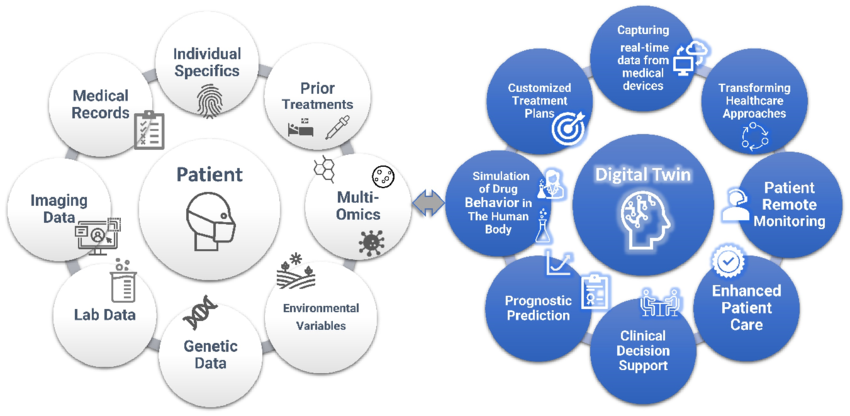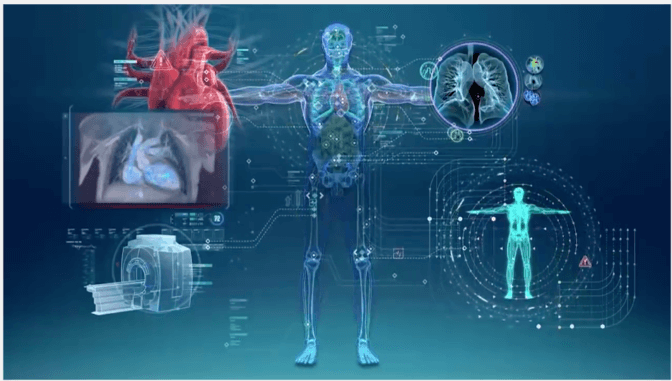Table of Content
Digital twins: How AI is creating alternative personalities — and what that means for us
/>Learn how digital twins change our lives!The Rise of Digital Twins: When AI Builds a Second You
The line between real life and virtual life is getting thinner by the day. And one of the clearest signs of this shift? The rise of digital twins.
These aren’t just robotic replicas or cold simulations anymore. We’re talking about fully AI-powered versions of ourselves — personalities that can chat, think, make decisions, and even learn like we do. It’s one of the fastest-growing ideas in tech, and it’s shaking up everything from how we work and learn to how we remember people after they’re gone. If it sounds like science fiction, that’s because it used to be. But not anymore.
So, what exactly are digital twins? How are they made with AI? And what happens when your “other self” starts becoming smarter, more responsive, and maybe even more useful than the real you?
Let’s break it down.
What Are Digital Twins?

Digital twins started out in a pretty different place — engineering and manufacturing. Back in the early 2000s, companies like NASA and General Electric developed virtual models of machines so they could run simulations, predict breakdowns, and optimize performance without having to test the real thing.
The core idea was simple: create a digital version of something physical, feed it real-world data, and use it to make smarter decisions. That concept worked so well that it spread fast — to cities, hospitals, and now, people.
Today, we’re seeing digital twins of patients used in healthcare to test treatments. City planners use twin models of urban areas to understand traffic patterns, energy usage, and pollution in real time. And increasingly, we’re seeing digital twins applied on a personal level — from AI bots that mimic your writing style to virtual assistants that can finish your thoughts.
How AI Is Powering Human-Like Twins
What’s making these digital twins feel less like software and more like people? The short answer: AI.
Artificial intelligence — especially through tools like natural language processing and machine learning — can now analyze mountains of data. It picks up how you speak, how you write, your favorite phrases, your emotional tone, and even the choices you’re likely to make in certain situations.
For example, apps like Replika offer users an AI companion that mimics conversation and learns from every chat to become more emotionally intelligent over time. In the world of video and media, tools like Synthesia or Hour One let people clone their face and voice to produce ultra-realistic video content — without ever standing in front of a camera.
There’s also a more emotional side to this. Services like HereAfter AI help people record interviews and memories, then use AI to turn those recordings into interactive chatbots. Families can then talk to a digital version of a loved one who’s passed away — keeping their voice, personality, and stories alive.
And this is just the beginning. These tools are becoming cheaper, faster, and easier to use — making digital twin technology accessible to everyday people, not just engineers or researchers.
What About the Ethics?
As with any powerful technology, digital twins come with serious ethical baggage. For starters, there’s the question of consent. Can someone create a digital version of you using your public data — your photos, your tweets, your videos? And who owns that replica: you, the person who made it, or the platform that hosts it?
There’s also a big issue with privacy. These systems often rely on deeply personal data — things you’ve said, done, or even forgotten. If that data is misused or leaked, the consequences could be serious. Not only could it harm your reputation, but it could create confusion between the real you and the digital you.
Deepfakes are already raising alarms around trust and manipulation. As digital twins become more convincing, it becomes harder to tell what's real — which could be dangerous in politics, media, and personal relationships.
And here's the biggest philosophical question: if your twin starts acting on your behalf — sending emails, giving advice, making decisions — where do you end and it begin?
The Psychological Side of Digital Twins

It’s not just about technology. It’s about people — how we think, feel, and relate to the world around us. And when you bring digital twins into that space, things get complicated.
On the positive side, AI twins can provide real emotional support. People going through grief might find comfort in talking to an AI version of someone they’ve lost. Teens or adults struggling with mental health might benefit from a chatbot that listens, responds with empathy, and never judges.
They can also be used in education or training, offering personalized guidance based on a learner’s needs, style, and pace.
But there are downsides. A 2023 study published in Frontiers in Psychology found that people who spent a lot of time interacting with AI companions formed emotional bonds — sometimes to the point where the line between real and artificial blurred. That kind of attachment could lead to confusion, disconnection from real relationships, or even dependency.
And what happens when your digital twin starts acting in ways that don’t align with who you are anymore? AI models evolve based on data — but people change based on life. The two versions could drift apart.
How Digital Twins Could Change Society
Zooming out, the rise of digital twins could reshape society itself.
In classrooms, we might see students learning from virtual tutors that match their exact learning style and even mirror their voice. In the workplace, companies could use digital twins of top employees to train new hires or test strategies. In the dating world, apps might someday let you interact with AI versions of potential matches before you ever meet in person.
Even social media could change. Instead of static profiles, we might soon interact with dynamic, always-online versions of ourselves — ones that post, reply, and share ideas even while we sleep.
This raises big questions. Will people start building relationships with AI personalities instead of real humans? Will we trust digital twins more than each other? Could this improve social connection — or completely disrupt it?
What’s Coming Next
If the last few years are any clue, the future of digital twins is moving fast.
Tech giants like Meta are already working on AI personalities for virtual reality spaces. Apple is exploring more personalized digital assistants. And new startups are racing to create "mind files" — massive databases of a person's thoughts, memories, and preferences — that could someday fuel posthumous digital lives.
We might see digital twins that understand our emotions and adjust their behavior in real time. We could have career versions of ourselves that sit in virtual meetings, negotiate deals, and file reports. Our AI twins might eventually live across all our devices — phones, cars, smart homes, and even metaverse avatars — becoming a seamless second self.
It’s no longer a question of if this will happen. It’s a question of how far it will go — and whether we’re prepared for what it means.
In Summary
Digital twins started out as tools for engineers. But today, they’re becoming deeply personal. They can talk like us, think like us, and sometimes even feel like us. Thanks to AI, your digital self might soon be just as real as your physical one — at least in the eyes of those who interact with it.
This technology opens up a world of possibilities — and challenges. It forces us to rethink identity, ethics, relationships, and even what it means to be human. And while there’s no single right answer, one thing’s for sure: digital twins are here, and they’re not going away.

Think About This
What would your digital twin be like? Would it reflect who you are right now — or evolve into someone new?
As this space grows, take a moment to reflect. Are you ready to share your mind with an algorithm? And more importantly — who gets to shape that version of you?
If you’re curious, keep exploring. There’s a lot more to learn about the future of digital identity — and the double life we’re all about to live.




